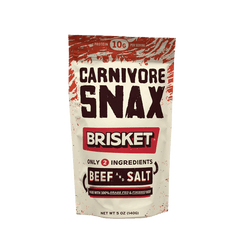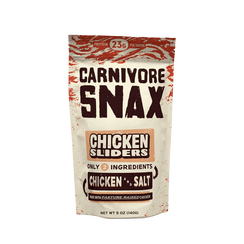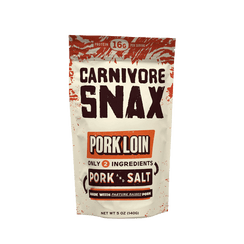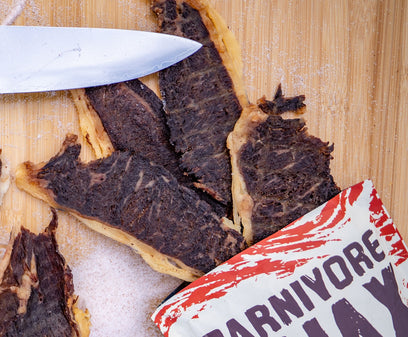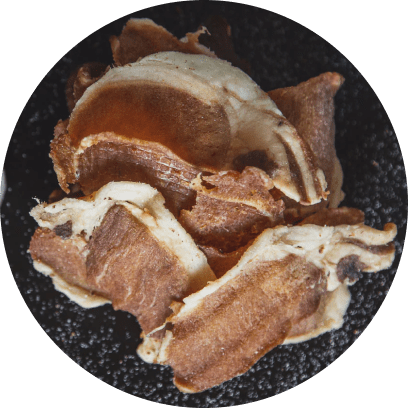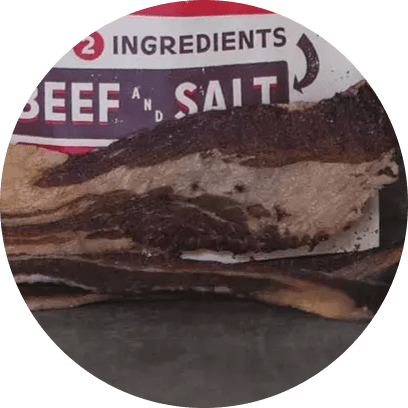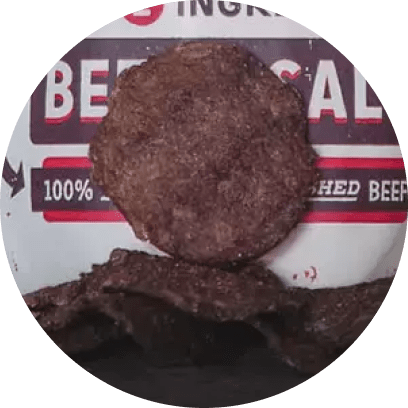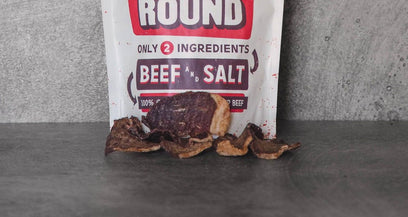THE CARNIVORE DIET BENEFITS




The attention surrounding regenerative agriculture has certainly skyrocketed recently as we become more and more aware of what it can do for our lands and our food supply system as a whole. But, regenerative farming techniques are anything but new. In fact, the history of regenerative agriculture spans centuries - dating back to our oldest ancestors.
When did regenerative agriculture start, though? And who came up with it? In our regenerative agriculture history lesson, you’ll discover the answers to these questions.
We’re going to time-travel hundreds of years to the inception of regenerative agriculture, showing you how it has evolved over the years. And, we’ll even give you our take on where we think this important approach to farming is headed in the future - providing you with ways to get on board and support the movement. We’ve got a lot to cover, so buckle up and let’s dive into the history of regenerative agriculture!
When Did Regenerative Agriculture Start? The Detailed History of Regenerative Agriculture
For those who are just discovering what regenerative agriculture is, we’ll start by explaining the basics of this approach to farming. Basically, regenerative agriculture is a way of farming and raising livestock that focuses on restoring the health of the soil and the ecosystem as a whole. It is based on the idea that by taking care of the land and working with nature, we can create a more sustainable and productive food system.
Think of it this way: Imagine you have a garden that has been neglected for a long time. The soil is dry, compacted, and doesn't have much life in it. The plants are not growing well, and the garden is not producing much food. Modern farmers would respond by drenching the plants and soil in synthetic nutrients in hopes of revitalizing the crop.
In regenerative agriculture, though, we would start by adding things to the soil that will help it to become more fertile, such as compost and other natural inputs. We would also plant cover crops, which are crops that are grown specifically to improve the health of the soil. These cover crops help to add organic matter to the soil, reduce erosion, and improve soil structure. Next, we would reduce tillage, which means using techniques that disturb the soil as little as possible. This helps to keep the soil intact and prevent erosion. We would also incorporate livestock into the garden, which can help to fertilize the soil and control pests.
By doing these things, we would start to see the soil become more fertile, and the plants would start to grow better. The garden would become more productive, and the ecosystem as a whole would become healthier.
This is the basic idea behind regenerative agriculture. By working with nature, we can create a more sustainable food system that benefits both the land and the people who rely on it. But, when did regenerative agriculture start?
When Did Regenerative Agriculture Start?
This is a hard question to answer, as the jury is still out on the specific date of inception for regenerative farming. The concept of regenerative agriculture has been around for centuries, with roots in traditional indigenous farming practices that focused on creating a balance between the needs of the land and the needs of the people who relied on it for food and other resources.
However, the modern idea of regenerative agriculture began to emerge in the mid-20th century as concerns about the environmental and social impacts of industrial agriculture practices started to gain traction.
In the 1960s and 1970s, pioneering agronomists and soil scientists such as Sir Albert Howard, J.I. Rodale, and Wes Jackson began advocating for a more sustainable approach to agriculture that emphasized soil health and ecosystem restoration.
Who Came Up With Regenerative Farming?
This is a very common question about the history of regenerative farming. And as mentioned above, pivotal figures spearheaded the modern movement. A few noteworthy names include Sir Albert Howard, Robert Rodale, and then his son J.I. Rodale, Wes Jackson, Allan Savory, and many others.
But, saying that these individuals came up with regenerative farming would be false. As mentioned earlier, the roots of this practice trace all the way back to indigenous people even prior to the first European footprint on American soil. Thus, it is the Native Americans we should thank for defining sustainable agriculture practices like those used in modern-day regenerative farming.
In fact, the National Farmer’s Union recently described exactly the methods in which these indigenous farmers used to farm sustainably - making the most of limited resources and creating the most sustainable, resilient food supply possible. One example of this was the “three sisters” crop.
Native American farmers planted corn, beans, and squash together to achieve a synergistic crop that resulted in all three species thriving. The corn provides a structure for the beans to climb, and the beans fix nitrogen in the soil, providing a source of fertilizer for the other crops. The squash spreads out on the ground, creating a natural mulch that helps to conserve moisture and reduce weed growth. This is the earliest recorded instance of intercropping - a pivotal element of any regenerative farm.
Another example of Native American people paving the way is in Agroforestry. This is a technique in which synergy is achieved by managing trees, crops, and animals in a very specific manner. For example, Native Americans allowed their herds to graze in forests among the trees - which allowed the animals a source of food and shade while also improving forest health by increasing carbon sequestration. Another example of agroforestry is how Native Americans burned excess forestry growth and used the ash from trees as fertilizers. This also left the soil more fertile, creating new forest growth in its place.
There is also evidence supporting the fact that the Indigenous people were the first to implement water management techniques to water their crops sustainably. And, it’s been shown that these same people were responsible for the early inception of permaculture.
How Regenerative Agriculture Has Changed Over the Years
As you can see, the lineage of regenerative agriculture spans past the 1400s - back before any European discovered America. But obviously, the primitive techniques used back then have since been improved and expanded upon. So - how has regenerative agriculture changed over the years?
Obviously, technology and science have transformed the manner in which many techniques are performed. One example of this is tools and equipment relied upon today. Traditional indigenous agriculture practices often relied on hand tools and simple implements for planting and cultivation, whereas modern regenerative agriculture may use tractors, planters, and other sophisticated machinery to plant crops and manage the land.
Additionally, modern regenerative agriculture often incorporates new technologies such as precision agriculture, which uses data and computer models to optimize crop production and minimize inputs like fertilizer and water. Today’s regenerative farmers use science to push the boundaries of what’s possible with sustainable agriculture.
An example of this in play is soil mapping. Farmers are able to figure out exactly what is in their soil, giving them insights into what they should and should not add to it. Remote sensing gives farmers an idea of the moisture content in their soil at any given time. Another common instance of this is GPS livestock monitoring. Rather than leaving people to tend the livestock at all times to keep track of them, farmers can let their cattle craze without worry - locating the herd at the touch of a button.
These are just a few examples of how regenerative agriculture has changed over the years.
Regenerative agriculture has continued to evolve and gain popularity as consumers become more concerned about the need for a more sustainable food system. Today, many farmers and ranchers are incorporating regenerative agriculture principles into their operations, and the movement continues to grow and evolve. And as we mentioned earlier, we’re going to finish this lesson on the history of regenerative agriculture by giving you our take on where it’s headed.
What is the Future of Regenerative Agriculture?
There is no doubt in our minds that regenerative agriculture will become more and more commonplace in the future - until eventually, it replaces all modern farming methods that “commercial agriculture” businesses have put in place. Why? Simple - the need to focus on sustainability is only going to continue to rise with the population.
Consumers are becoming more and more aware of the food supply chain. Not just what goes into getting their food on the table from a health and quality standpoint - but the impact farming and agriculture have on our lands.
We as a civilization put a higher priority on preserving and restoring our lands than ever before. Because regenerative agriculture sequesters carbon in the soil and enhances the resilience of agricultural systems, it will become more important than ever as resources become more scarce.
It’s very likely that at a certain point, governments will be forced by their people to get on board with these practices and put legislation into place that makes regenerative agriculture standard - while outlawing harmful techniques involving synthetic fertilizers, pesticides, and other land-destroying tactics.
Technological advancements, such as precision agriculture and the use of drones, will likely continue to shape the future of regenerative agriculture. As these technologies become more widely adopted, they will enable farmers to make more informed decisions, improve land management practices, and enhance the sustainability of their operations.
Want to Learn More About How You Can Support Regenerative Farming?
There you have it - a detailed lesson on the history of regenerative agriculture. As you can see, this approach to farming is as old as time, and it isn’t going anywhere anytime soon. In fact, the rising emphasis on sustainable agriculture is only going to grow in the years to come.
So - if you want to learn more, read our article on why regenerative agriculture is important. Then, learn how to support regenerative agriculture yourself so you can make a difference today. It’s easier than you think. From using your voice to advocate for this method to shopping smartly with brands that employ regenerative agriculture practices - these are the small things you can do now that will have a big impact on our food supply chain.
And, we’re practicing what we preach here at Carnivore Snax. Our meat chips are sourced from the most elite regenerative farms right here in the United States. These aren’t just the best healthy low-carb snack because they melt in your mouth or have just two, all-natural ingredients. They’re the best carnivore diet snack because you can feel good about eating them!
Whether you just want to do your part to support regenerative farming, you want to figure out additional ways to eat a high-protein diet, or you’re considering starting either carnivore or paleo - stock up on these amazing carnivore crisps today!
Wrapping Up Our Conversation on the History of Regenerative Agriculture
Our lesson on the history of regenerative agriculture is complete - and we hope this conversation inspires you to take the right stance on regenerative farming. By being an advocate and spending your money with brands whose values align with yours, you can make an impact.
So - head over to Carnivore Snax and check out our ribeye chips, steak chips, lamb chips, beef chips, brisket chips, chicken chips, or pork chips. No matter which meat pastry you go with, you’ll be overwhelmed by amazing, tantalizing flavors you can’t get enough of!












